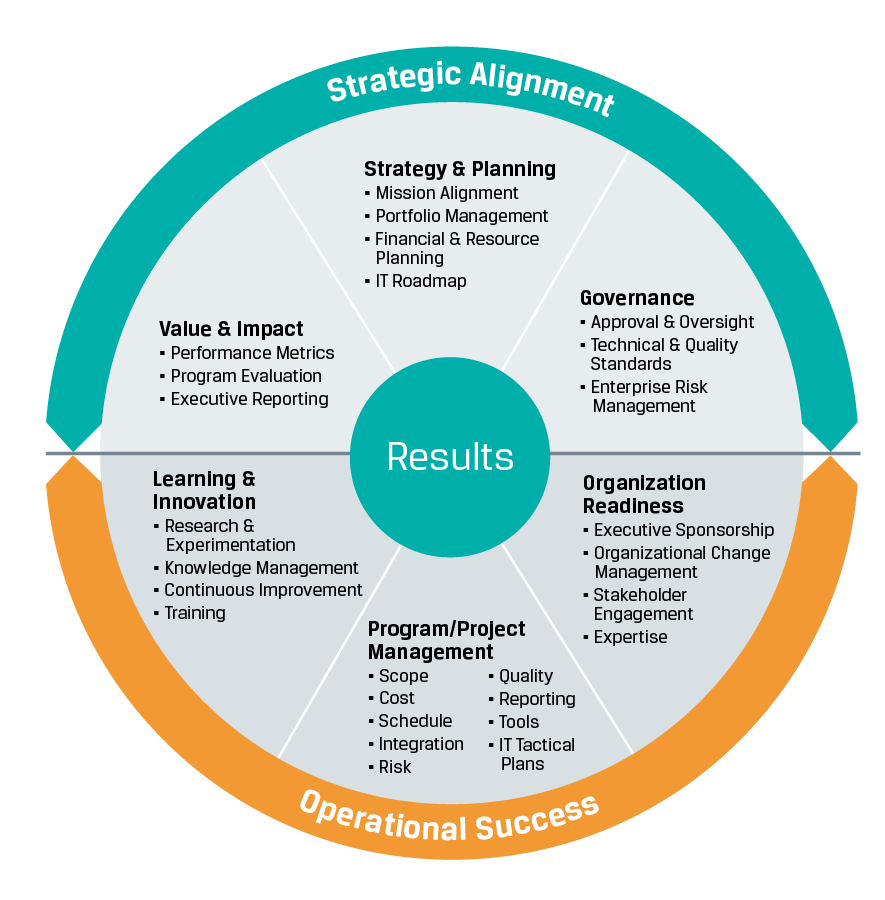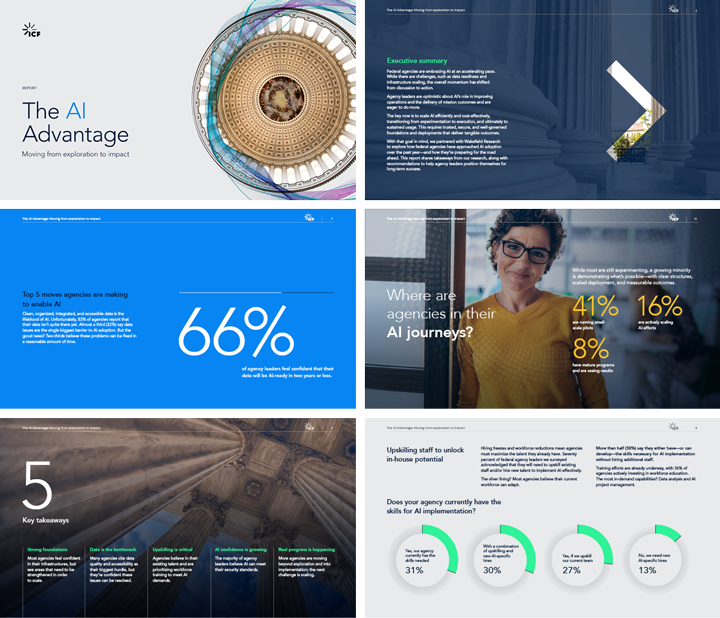
The next generation Program Management Office (PMO) isn't a cost center, it's a value center
Is your PMO viewed as a budget line item and an administrative burden or a source of real value?
To be more effective, PMOs must evolve their capabilities and services in a way that translates into value for their customers and programs. Historically, PMOs have focused on overseeing the tactical activities of a program or a portfolio, which means more reporting, more paperwork, and more meetings. These programs often track what has been called the “iron triangle” of schedule, scope, and costs. How these activities translate into enhanced value is left more to faith than fact. Many traditional PMOs fall short of their potential by:
- Ignoring whether or not programs are strategically aligned to organizational strategy,
- Focusing on tactical items like outputs, not overall program outcomes,
- Using program data for status instead of strategic performance management,
- Being overly process-driven for the sake of process only,
- Failing to implement program mechanisms that focus on the soft skills needed for organizational change management, communications, training, innovation, and stakeholder feedback loops.
The result? Program stakeholders and staff view PMOs as an unwelcome drain on budgets rather than a source of guidance and resources--in other words, cost centers rather than value centers. Many program stakeholders view PMOs as “big brother,” always pointing out what someone isn’t doing or hasn’t done. Traditional PMOs seem to disproportionately highlight aspects of programs that are not going well, like falling behind schedule, going over budget, or failing to comply with program guidelines.
The takeaway is clear: PMOs that only manage scope, schedule, cost, and risk must evolve into something that offers greater value. While there’s nothing wrong with expecting programs and the people that work on them to produce results, the PMO can and must do a better job at delivering and conveying the positive value it can bring to federal executives, program managers, and the programs they support.
So how can PMOs recast their less-than-optimal reputation? For starters, these teams should completely rethink their role, tone, and function. Moving beyond their traditional responsibilities, PMOs can help organizations understand the impact of policy and appropriation decisions as well as the strategic and operational challenges that emerge on programs. They must then translate this understanding into value that stakeholders view as helpful and that deliver measurable contributions to program success.
How program team members engage with stakeholders must change, too. “Old school” PMOs have been all about compliance and control and “checking up” on managers to make sure everything is as it should be. A value-based PMO adopts a service-oriented approach, an approach that helps program managers drive the program forward toward desired mission outcomes. The value center PMO is there to support program managers, not criticize them and call out failures.
Next Generation PMOs take a different approach. Here are some best practices that distinguish them.

Value-Driven PMOs...
- Engage stakeholders and integrate strategies to unlock innovative potential. Many organizations develop strategies focused on platforms or initiatives. These strategies propel focused efforts (cloud, mobile, shared services) but limit awareness of the potential that can be harnessed by a unified strategy--one that promotes technology convergence and innovation. As we see with modern mobile devices, convergence of functions and technology has produced industries, created enormous social networks, and harnessed disruptive forces to unlock new value. PMOs serve as a facilitator and governor for change. By surfacing ideas, technology, functions, and capabilities that offer strategic synergies, program managers can help to shape strategies to manage risk and digital transformation.
- Collect and use data to drive strategic and operational insights. The best decisions are made with good data. When PMOs integrate data from across the organization, they’re better prepared to shape strategy, inform decision-making, and track performance. A value-driven PMO:
- Adds a new dimension by collecting financial, project, and operational data.
- Delivers analysis that offers rich views of performance that take the guesswork out of decisions.
- Makes data useful to the enterprise by harnessing models and tools that help managers explore customer perspectives on performance, business performance against plans, and how tradeoffs impact capability performance.
- Produce information that builds consensus and takes the guesswork out of decision-making. PMOs should use information from across the enterprise and from outside sources to inform the decision-making process. They should work with decision-making bodies to make sure that they’re on the same page when it comes to plans, objectives, and strategies. And they should record decisions quickly to share with stakeholder communities who’ll be impacted. Following these practices will ensure adherence to federal government compliance laws and regulations, and compliance standards like TechStat, PortfolioStat, AcqStat, and the Federal Information Technology Acquisition Reform Act (FITARA).
- Help prepare organizations for change. Policy and product roll-outs work best when you prepare the workforce for what’s coming. Organizational change management seeks to build awareness of a change, knowledge of how workers will be impacted, desire to accept the change, and knowledge of how to adopt and succeed. The Next Generation PMO assists with stakeholder engagement, communications, and educational efforts that prepare a workforce for change. In an age of disruption, these capabilities have never been more important.
- Do the basics better with the Next Generation PMO. Traditional PMO functions are still just as important as they ever were. Integration of traditional PMO functions within the Next Generation PMO framework ensures that information dependencies are known, information is shared, and consistently meaningful information is available to program stakeholders.
- Manage innovation and continuous learning through the PMO. To get true value from innovation efforts, organizations need processes and controls to guide prototyping, learn from the good and bad, and advance qualifying efforts to projects that scale. As integrators, process stewards, and information analysts, PMO personnel are uniquely suited to performing innovation management and sharing the lessons learned from innovation efforts.
Don’t Be Overhead. Be A Value Center.
Becoming known as a value center rather than a cost center all starts with a different way of thinking about a PMO’s contribution to the organization and the programs it serves. New approaches, more expansive skillsets, and new PMO products are needed. New types of data should be captured, analyzed, and leveraged to help managers evolve their programs. We should keep developing, tracking, and analyzing program metrics, yes, but we need to do the same with outcome metrics as well. This shift will help transition your PMO from a cost center to a value center.
How is your PMO operating today? Do your stakeholders view your contributions as value added or as process overhead? Break through traditional PMO performance and take your organization to the next level with ICF Value Center.
